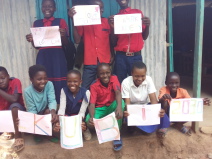
Arts*Health blog
Interviews
with Professionals from Art Fields, Dance Medicine, Health Management and Fitness
Shared Best Practices for Health Improvement and Wellbeing
BalletFit
Interview
Tatjana Christelbauer with Iva Ignjatovic
Professional ballet dancer at the National Dance Theatre Belgrade/Serbia
Q: Iva, you are currently promoting BalletFit program.
What is it about?
A: The Program is designed for recreational people who want to improve health, fitness, body posture, resilience, and learn the basics of classical ballet. The training includes a mix of warming-up and stretching exercises on the ground floor and in a standing posture, containing elements of fitness and Pilates, followed by classical ballet exercises on barre and center floor, with short choreographies based on movements of contemporary ballet.
Q: How can dance practice enrich fitness/training and v.v.?
A: Ballet exercises, like all other forms of exercise, have a positive effect on coding. Throughout the classical ballet, endurance and strength are particularly pronounced. We gain fitness by repeating individual elements, starting with exercises for the abdominal and back muscles, through leg exercises – such as plié and relevé, all the way up to (small) jumps. In fact, proper ballet posture - body posture alone, adequately activates all groups of muscles.
Q: From your professional experience, what is essential in training of the classical ballet?
A: A good coach plays an important role for good training: someone who has the knowledge and knows how to pass it to the next. An important role plays the energy and the attitude of the educator.
The educator who encourages and motivates dancers will have more success than one who only criticizes and thus creates a sense of powerlessness and lack of confidence.
Q: How can dance arts support the improvement of health? What is your experience?
A: Dance, like other forms of physical activity, has a positive effect on health.
In my work with adult students of BalletFit, I could observe how women could improve their posture and figure significantly after coming to training. Furthermore, with weekly exercises, some participants could treat their back pain (mostly caused by office work) which was significantly reduced or completely released. Also, the students themselves have noticed that they are more flexible by moving and have generally improved their physical condition.
If we are not just talking about physical health, it is noticeable that the exercises also have a positive effect on the self-confidence of the practitioner.
Working with children, there are cases with “flat soles” which can be corrected with ballet exercises. Also, minor back or leg deformities can be corrected with this type of exercise. Significant in development is the knowledge and mastery of one's body, then the coordination of movements that are positively influenced by this type of exercise. Especially by children, stretching gives faster results. Physical activity is of great importance for the proper and healthy development of a child. Ballet practice can also develop their ability for attention, concentration, ability to memorize movements. Also, performances that are an integral part of the program are an essential component in the growth of each individual. They are a way to build confidence, but also self-criticism, work habits, and discipline.
Q: You have trained the Serbian Rugby team Partizan with classical ballet. How come that rugby players could find a relation to the lyrical classical ballet? What is the link between such “hard sport” and ballet?
A: For me as a coach, it is an extremely valuable and memorable experience. I think that my opinion is shared by Partizan rugby players. Their conditioning coach, Marko Madzar, came up with this idea. The idea of this compound was not so much to find a connection between rugby and ballet, but rather to get the rugby players acquainted with other types of training, and to bring about a variety of movements to activate some muscles they do not otherwise use. For their sport, what they need most from ballet are certainly stretching, movement coordination, and balance.
Q: Which role plays the eating behavior in your training and how it differs by BalletFit from classical ballet?
A: The importance of “healthy eating” is a highly trending topic nowadays. Health awareness is generally raising among all social structures, starting with healthy food to body culture and regular training. Increasingly, people are avoiding white flours, opting for buckwheat and spelling, as well as replacing sweet, chocolate snacks with dried or bony fruits. Until a decade ago we thought chocolate would give us energy, now we get that energy in healthier ways.
The difference between BalletFit and classical ballet is that ballet class starts with barre-exercises because it is understood that the professional player has to prepare his body for the beginning of the class, while BalletFit, as a recreational program, involves warming-up exercises as a body preparation for ballet exercises. Also, since BalletFit is for people who have not practiced ballet before, it does not insist on maximally open leg positions during ballet exercises, but a more natural option for the feet to form a 90°degree angle.
All exercises are adapted to the recreational and that they feel well while performing them and of course, it is of great importance that the exercise does not cause injury.
Q: One exercise which you will recommend to women all ages?
A: I would always recommend any type of stretching to any woman at any age.
Thank you! Hvala!
16th January 2020
















